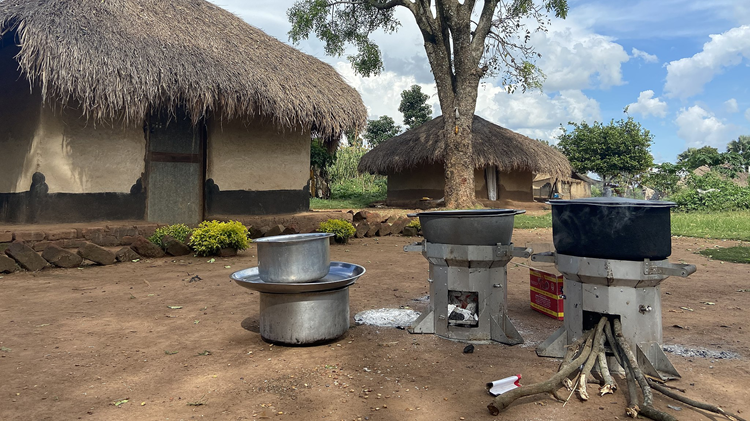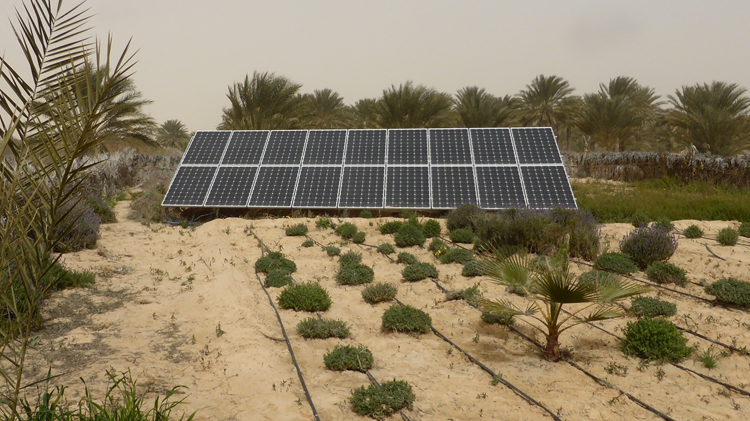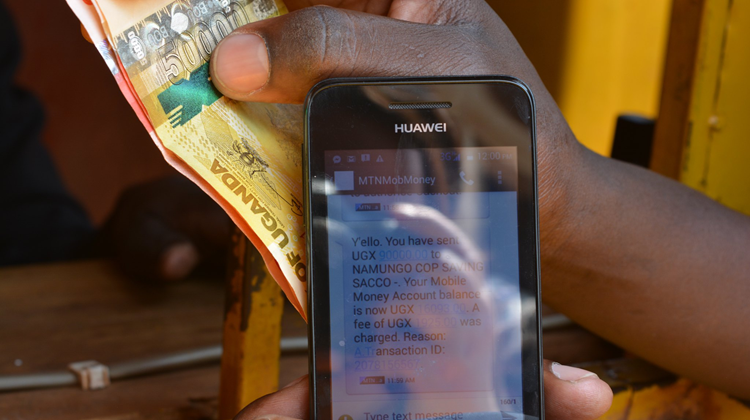Comorian agriculture: key driver of inclusive growth or a persistent challenge?

Agriculture mechanisation, rural road construction and credit access will help reduce poverty and strengthen the economy in Comoros.
Agriculture is the foundation of economic survival and social cohesion in Comoros. As of 2023, it contributed around 34.5% to GDP and employed over 70% of the working population, particularly in rural areas where alternative sources of income are limited. This contribution makes agriculture central to both national identity and prospects for inclusive development. However, its strategic importance is compromised by weak rural infrastructure, outdated farming practices, land tenure insecurity, barriers to financing and additional climate pressures that are limiting domestic agricultural production, leading to high food imports.
Comoros faces an alarming imbalance in food trade, with domestic agricultural production covering only between 40 and 45% of the country's total food needs, while between 70 and 90% of supplies need to be imported, depending on the product. This gap has led to a growing dependence on food imports, particularly of rice and wheat, which together account for over 70% of the population's nutritional calorie intake. Further, weak crop yields due to archaic cropping practices, limited access to quality inputs and financing sources, and the near-absence of irrigation infrastructure (less than 2% of cultivated land) limit the country's agricultural capacity. Post-harvest losses remain high, up to 30% in some products, due to inadequate storage and transport systems. Climate change exacerbates these problems with increasingly irregular rainfall, prolonged dry spells and more frequent extreme weather events. These conditions disproportionately affect small-scale farmers, who are the mainstay of Comorian agriculture, but who often lack the necessary tools to adapt or invest.
Despite these challenges, investments in producing and processing rice, corn, vegetables, poultry, vanilla, ylang-ylang, cloves and fisheries are increasingly seen as drivers of food security and economic diversification. While food crops face productivity constraints, high-value export crops have benefited from targeted initiatives, established trade networks and international demand. These products, notably ylang-ylang, vanilla and cloves, generate 86% of Comoros’ export revenues: cloves contribute 71%, vanilla 4% and ylang-ylang essential oils 11%. Comoros is the leading global producer of ylang-ylang, producing around 70% of the world's supply, which represents 50 to 70 tons per year out of a total consumption of 100 to 120 tons. The country is also the world's fourth-largest exporter of cloves, behind Tanzania, Madagascar and Indonesia. Furthermore, Comoros has good land potential for agriculture.
Comoros has good land potential for agriculture. Total agricultural land was estimated at 131 000 hectares in 2022, representing 71.5% of the country's surface area. Around 66 000 hectares of this is arable land, which represents about 35% of the total land area. While this is modest compared to larger agricultural economies, arable land in Comoros is a valuable resource but large parts are underutilised. Its soils, of volcanic origin, are very rich and the climate is very favourable to all crops, allowing the development of different terroirs with numerous crop varieties. There is scope to intensify productivity through terracing, irrigation, mechanisation, increased fertiliser use and further crop diversification. Given the sector’s high employment share, contribution to GDP and strong export earnings, it presents an immediate and scalable development opportunity, in particular for ensuring food security.
Comoros supplies 50 to 70 tons of ylang-ylang annually, making it the world’s top producer
Given this comparative advantage and the stakes involved in agriculture, better capitalisation (i.e. in terms of funding and agricultural mechanisation based on its leading crops) could drive the country towards self-sufficiency and inclusive economic transformation. Unlocking agricultural potential is critical, especially in a country with weak inclusive growth indicators. Comoros's Human Development Index (HDI) was 0.59 points in 2022, placing it at a lowly 152nd out of 193 countries globally. The country continues to face poverty challenges, with a rate of around 38.4% estimated for 2023, although there has been a slight decrease compared to 2022. The country’s GDP per capita (in purchasing power parity, PPP) reached US$3 500 in 2023, still relatively low compared with US$6 103 for other lower-middle-income African countries.
Through the Plan Comores Emergent (PCE), the Comorian government has taken some initiatives towards agricultural transformation. The PCE contains various strategies for revitalising the agriculture sector. Additionally, the World Bank, the African Development Bank and several other international institutions have initiated a number of agricultural intensification programs in the country, such as the Projet d'Urgence d'Appui à la Production Agricole (AEFPF), the Projet Productivité des Exploitations Agricoles Familiales et Résilience (PREFER) and the Projet AFIDEV. The AFIDEV project aims to develop agricultural sectors of excellence such as vanilla, ylang-ylang and cloves. It also includes road rehabilitation to open up rural areas. In addition to these public solutions, private initiatives involving the adoption of sustainable agricultural practices, notably composting, crop rotation and integrated pest management, offer a promising way of building climate-resilient agriculture while preserving natural resources.
The World Bank believes that better capitalisation of Comoros' agricultural potential can reduce poverty, which will fall by 5% by 2030. Furthermore, a recent study by the African Futures and Innovation programme at the Institute for Security Studies (AFI-ISS) shows that Comoros can achieve even more rapid and inclusive growth by pursuing targeted intersectoral interventions. The team modelled an Agriculture scenario that envisions ambitious yet feasible increases in yields per hectare, thanks to improved management, seeds, fertiliser technology and expanded irrigation and equipped land. Efforts to reduce food loss and waste are emphasised, with increased calorie consumption as an indicator of self-sufficiency and prioritising consumption of domestic produce over food exports. Additionally, enhanced forest protection signifies a commitment to sustainable land use practices.
In the Agriculture scenario, total crop production will increase to 741 700 tons by 2043, which is 37.5% more than on the country’s current development path
In the scenario, yields per hectare will increase to 6.3 metric tons by 2043, which is a 37% improvement compared to the projections of the Current Path (business-as-usual scenario). This improvement in yields will lead to an enhancement in total agricultural production (livestock, fisheries and crops), which will increase to 741 700 tons by 2043 in the Agriculture scenario (almost 202 310 metric tons more than the Current Path). Crop production, particularly, will rise by 41.5% over the Current Path by 2043. This can reduce the import dependency of crops in the country, which will decline to 17.9% of the demand in the Agriculture scenario instead of 40% in the Current Path.
In addition, Comoros’ GDP per capita (PPP) will increase to US$5 142 by 2043, which represents an increase of 12% compared to the Current Path. Furthermore, the number of poor people will decline to 318 600 (equivalent to 25.6% of the population) by 2043, compared to 368 400 people on the Current Path, reducing extreme poverty by 49 793 people.
Ultimately, agriculture in the Comoros holds the keys to economic resilience and social equity. Realising this potential will require targeted investment and institutional reform. It needs rethinking of agriculture as a subsistence sector to turn it into a strategic driver of shared prosperity, sustainability and national renewal. Good management of agricultural policy focused on key crops, optimisation and redistribution of revenues, and farmer empowerment will help to reduce poverty and inequality significantly. Secure land tenure and support for women farmers will be key to ensuring that productivity gains translate into equitable outcomes. To make this a reality, priority should be given to scaling rural credit access, training farmers in climate-smart practices, expanding irrigation infrastructure, strengthening rural farmer cooperatives and aligning donor programs with overall domestic policy goals.
Read the recently updated full country analysis of Comoros here.






